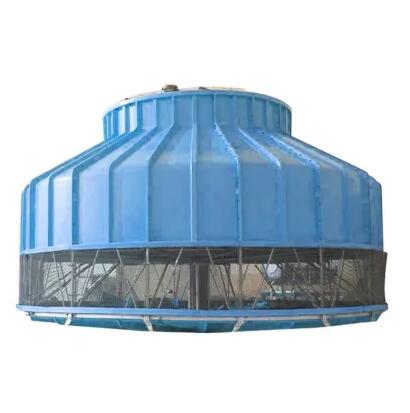How to improve cooling tower energy efficiency
Cooling towers are the least maintained utilities in industry. Certainly, the energy consumption of cooling towers is relatively low compared to other utilities, but the indirect impact on the energy consumption of other systems (chillers) connected to the cooling tower will place great emphasis on the need for cooling tower efficiency assessment and improvement.
Cooling towers are the least maintained utilities in industry. Certainly, the energy consumption of cooling towers is relatively low compared to other utilities, but the indirect impact on the energy consumption of other systems (chillers) connected to the cooling tower will place great emphasis on the need for Servo Control Wire-cutting EDM Machine assessment and improvement. The following is a list of ideas to improve the energy efficiency of cooling towers:

â— Control the cooling tower fans according to the discharge water temperature.
â— Replacing cooling tower aluminum fan blades with high-efficiency fiber-reinforced plastic (FRP) blades.
â— Automatic drainage to minimize it.
â— Control to the optimum water temperature based on cooling tower and chiller performance data to reduce cooling tower energy consumption.
â— Install 2 speed or variable frequency drives for cooling tower fan control if the number of fans is low, or use on/off control if the number of fans is high.
â— Turn off unnecessary cooling tower fans when load is reduced/process is running at partial load
â— Replace belt-driven or gear-driven cooling tower fans with direct-drive fans or EC fans.
â— Periodically clean clogged cooling tower water distribution nozzles.
â— Install new nozzles to obtain a more uniform water flow pattern for enhanced heat transfer.
â— Replace splash guards with a self-extinguishing PVC honeycomb film filler.
â— Replace old spray nozzles with new square spray ABS virtually non-clogging nozzles on old counterflow cooling towers.
â— Replace slatted water separators with high efficiency, low pressure drop, self-extinguishing PVC honeycomb cells.
â— If possible, follow the cooling tower manufacturer's recommended clearance around the cooling tower and relocate or modify structures, signs, fences, bins, etc. that interfere with air intake or exhaust.
â— Optimize cooling tower fan blade angles based on season and/or load.
â— Correct excessive and/or uneven fan blade tip clearance and poor fan balance.
â— Use speed pressure to recover fan rings.
â— Transfer clean air conditioning building exhaust to the cooling tower during hot weather.
â— Reconnect leaking cooling tower cold water basin.
â— Check that the overflow pipe is working properly.
â— Optimize the use of chemicals.
â— Consider sidestream water treatment.
â— Limit flow through large loads to design values.
â— Shut down unused loads.
â— Remove the discharge water from the return main.
â— Optimize the discharge flow.
â— Use the discharge for other purposes (Remember, the discharge does not have to be removed at the cooling tower. It can be removed anywhere in the piping system.)
â— Implement a cooling tower winterization plan to minimize icing.
â— Install interlocks to prevent fans from running when there is no water flow.
â— Establish a cooling tower efficiency maintenance program. Start with cooling tower energy efficiency monitoring, analyze the cooling tower maintenance program, and then include it as part of an ongoing energy management program.